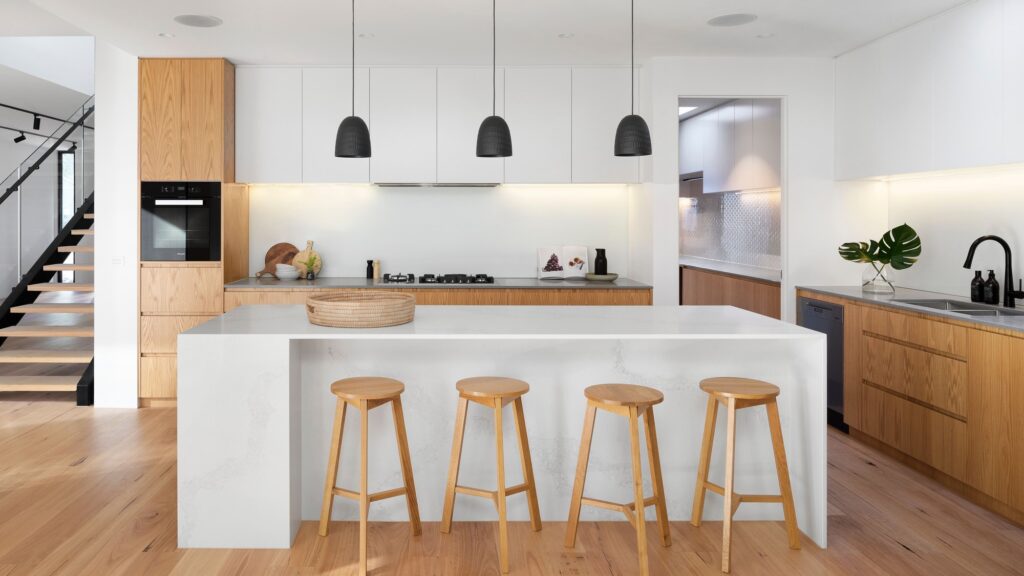How to choose your mortgage: a step-by-step guide for first time buyers
For most Canadians buying your first property is the biggest financial decision of your life. That’s why it’s worth it to spend the time researching how to save money and make the right choices, especially when it comes to your mortgage. Picking the right mortgage could give you a huge advantage and save you tons of headaches down the road. On the other hand, not spending the time to evaluate your mortgage options can mean leaving thousands of dollars on the table.
Comparing mortgages can be complicated, which is why you might be tempted to just look for the lowest rate or go with your bank when picking a mortgage. Choosing a mortgage for the right fit could save you thousands of dollars by helping you avoid break penalty fees down the road.
We’ve put together this guide to help you navigate the complex world of mortgages and choose the right mortgage for you
Key Takeaways
- Step 1: Determine your budget with an affordability calculator
- Step 2: Choose your mortgage term
- Step 3: Determine your mortgage amortization
- Step 4: Choose between fixed, variable, or adjustable
- Step 5: Shop mortgage offers
Step 1: Determine your budget with an affordability calculator
You probably already have a budget in mind for your home, in fact you may already be shopping with your real estate agent. Before you pull the trigger on a home, you’re going to want to get a mortgage pre-approval to get some assurance you’ll be able to close on any offer you place. Before you get a pre-approval, you’ll want to calculate how much mortgage you can qualify for.
Our mortgage affordability calculator will help you set a budget for yourself and determine how much you’ll need to save for a down payment to afford your ideal property based on your income.
This is when years of diligently saving, keeping a good credit score, and filing your taxes on time will pay off.
If you don’t have a typical full-time income, that doesn’t mean you won’t be able to qualify for a mortgage. We work with lenders who offer solutions for borrowers with alternative forms of income or liquid assets. A net-worth mortgage for example let’s borrowers qualify based on a portfolio of investments and is ideal for borrowers who don’t have a steady source of income, but have the assets to afford a home.

Step 2: Choose your mortgage term
Deciding the length of your mortgage term is one of the most important decisions you’ll make when it comes to getting your mortgage. Your mortgage term affects your monthly payments, how much interest you’ll pay, and your options later on, but what term is right for you?
Your mortgage term length refers to the length of your contract with your current mortgage lender. The most common mortgage term length is 5 years, but can be shorter or longer. You can go with a term as short as 1 year, or as long as 10 years in some cases.
There are pros and cons to both shorter and longer mortgage terms depending on your situation. Some questions to consider:
- How long do you see yourself owning this property?
- Do you have any plans to move in the near future? If so, would you consider selling or keeping the property?
- Do you envision yourself buying another property? If so, would you need to sell your current property to finance your next purchase?
- Where do you believe interest rates are headed? Based on current rates, do you think they will go higher or lower in the short-term?
Likely the biggest factor determining what term you go with will be the interest rates offered.
Depending on whether analysts forecast that rates are on the rise or likely to fall in the future, interest rates could be higher or lower for shorter terms. If you’re planning on a big change to your financial situation in the future, or want to take advantage of rates decreasing, you might want to consider a shorter term.
Our mortgage analysts provide a monthly interest rate outlook where we forecast the future of interest rates in Canada. Work with a mortgage advisor to determine the right term for you if you aren’t sure and don’t want to go with a typical 5-year term.
Benefits of a longer mortgage term:
- Stability: If you choose to go with a fixed rate mortgage, going with a longer mortgage term gives you more stability and allows for consistent budgeting if your financial situation will stay relatively the same over a long period of time.
- Potentially reduced interest rates: Depending on the current rate environment a mortgage term longer than a few years may offer a more attractive rate.
- Convenience: With a longer mortgage term, you won’t have to worry about renewing as often, which can be a bit of work.
Downsides of a longer mortgage term:
- Less flexibility: Longer mortgage terms limit your ability to make changes to your mortgage, such as refinancing or accessing equity, without incurring penalties or fees.
- Potentially reduced interest rates: Depending on the current rate environment, a shorter mortgage term may offer better rates compared to a longer one.
- Less opportunity for saving: If mortgage rates drop during your mortgage term, a longer mortgage term leaves you with less opportunity to take advantage of lower rates as your renewal date will likely be further away.

Step 3: Determine your mortgage amortization
The amortization period is the length of time it takes to pay off a mortgage entirely, including interest. The amortization period is not the same as a mortgage term and can be as long as 25 years or more. Your amortization period determines how much you will pay monthly in principal in order to pay off your mortgage within the timeframe. If your amortization is shorter, you will need to pay more in monthly payments to pay down the principal of your mortgage quicker, and likewise if your amortization is shorter you will pay less on your monthly mortgage payments. On the other hand, choosing a longer amortization period means you will be paying interest for longer, so the total interest you pay over the life of your mortgage will be more. Using our mortgage calculator, we can quickly see that going from a 25 year amortization to a 30 year amortization decreases the monthly payments on a $500,000 mortgage at current rates from $3,084 to $2,765.
If your down payment is less than 20%, the maximum amortization you can get is 25 years.
Most lenders offer a pre-payment program, meaning you can pay off your mortgage earlier without incurring fees for breaking your mortgage terms.
Step 4: Choose between fixed, variable, or adjustable
Perhaps the most important part of your mortgage term is whether it will be a fixed, variable, or adjustable rate mortgage. Don’t worry, you can always switch to any of the others when it comes time to renew your mortgage at the end of your term.
Fixed rate
A fixed rate mortgage means the interest rate stays the same over the length of your mortgage term. The rate you agree upon with your lender doesn’t change and your monthly mortgage payments will stay the same every month through to the end of your mortgage term.
Variable rate
The interest rate on a variable rate mortgage changes if the Bank of Canada raises or lowers interest rates. Your lender will offer you a variable rate based on their prime rate, for example prime + 1.00%. This doesn’t mean your monthly mortgage payments will automatically change however. Instead, if interest rates go up, your lender will increase your amortization amount to keep your monthly payments the same until it’s time for your renewal (at which point you will need to bring your amortization back down) or you hit your trigger rate, which is the point at which your monthly payment no longer covers all of the interest owing on your mortgage.
Adjustable rate
An adjustable rate mortgage is similar to a variable rate mortgage, but the monthly payments change with interest rates. Unlike a variable rate mortgage, if interest rates rise, your monthly mortgage payment automatically increases, and your amortization period stays the same. On the flip side if interest rates go down, then you’ll benefit from decreased monthly payments.
There are benefits and downsides to each kind of mortgage, and your best bet is to talk to a mortgage advisor to help you determine which is right for you.
If you think mortgage rates are likely to decrease in the near future, then going with an adjustable rate mortgage might appeal to you if your goal is to reduce your monthly payments. On the other hand, if you value having a steady monthly budget, then having a fixed-rate mortgage might be the way to go. If you simply go with the cheapest interest rate offered, then you might end up with a variable rate mortgage. It’s a good idea to evaluate each option and determine which makes sense for your situation and goals.

Step 5: Shop mortgage offers
Once you’ve calculated your budget, and determined what mortgage terms you’re looking for, it’s time to shop offers.
If you go directly to a mortgage lender to get a pre-approval, you’ll only be looking at their mortgage products, and they make more money the higher your interest rate is. That’s why it’s often recommended to shop mortgage offers from multiple lenders with the help of a mortgage broker.
Perch is your digital mortgage brokerage, offering you the opportunity to search and compare mortgages, then get pre-approved in as little as 20 minutes. Think of us as Google Flights, but for your mortgage.
When you sign-up to Perch you get instant access to our Pathfinder tool, which will show you mortgage options from dozens of lenders.
Our mortgage advisors have years of experience in the mortgage industry, and can help you choose the best mortgage for your situation, so you don’t have to worry about leaving money on the table.






